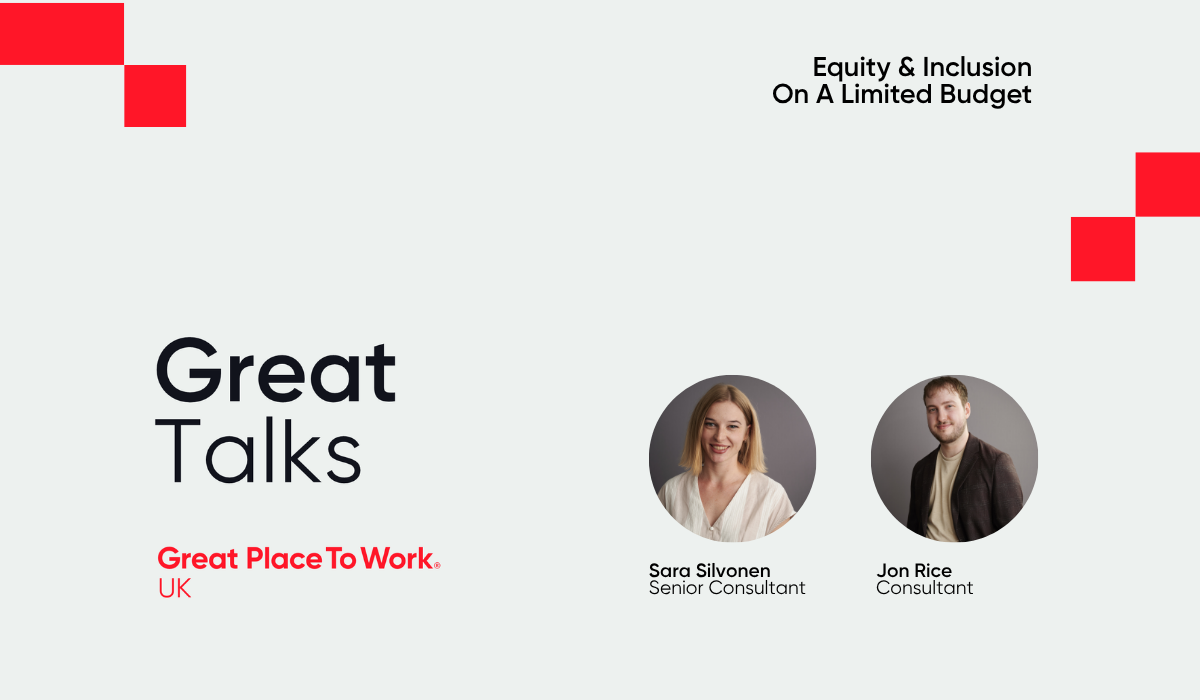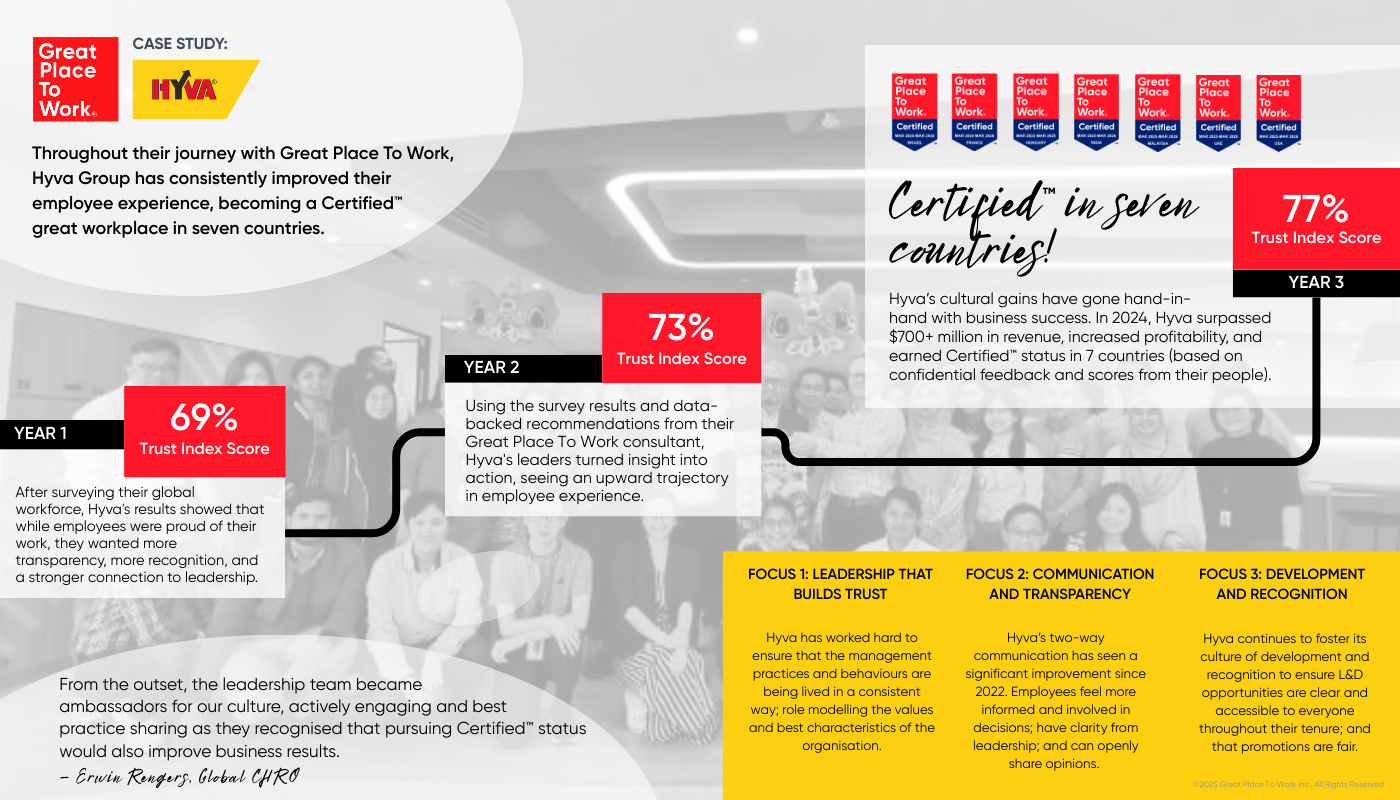Employee wellbeing is a topic most, if not all, employers will openly claim is of utmost importance to them. But how many can say it is truly a strategic priority?
As we know all too well at Great Place To Work, the cycle of continuous improvement begins with measurement: what gets measured, gets actioned. And so to begin improving employees’ wellbeing at work, organisations need to understand their current experience of it, and where potential gaps may lie. Having conducted an initial assessment, and making subsequent action plans to address shortfalls, further more targeted surveys can then evaluate the impact of such improvements.
Naturally, we would recommend the full 15-item Extended Wellbeing Index to be run as a baseline diagnostic for employee wellbeing, to cover all five pillars of our wellbeing model. But where employers wish to touch on only the most critical elements of wellbeing at work, what statements best capture these?
| Useful Read : 5 Tips to Improve Employee Survey Response Rates
We recommend every wellbeing survey to include the following five questions:
Question 1: This is a psychologically and emotionally healthy place to work.
Although an outcome statement – and hence difficult to action directly – this question helps employers understand how employees feel about their day-to-day psychosocial work environment, including the extent to which they experience psychological safety, undue pressures or abusive relationships. As such it forms much of the foundation for wellbeing at work – in the absence of which many initiatives are likely to be ineffective. Lower or unexpected scores on this statement call for further investigation via open-ended questions, focus groups or one to ones.
Question 2: The demands of my job do not cause me excessive stress.
A common culprit for the previous statement scoring low, a stress indicator question is important to include especially where job demands are known to be inherently stressful. This statement is less about the overall culture but instead zones in on how individual employees experience the demands of their job roles on a more personal level, assessing their ability to cope given the resources available to them. Whilst useful to gather aggregate stress data via confidential surveys, continuous stress monitoring should also concurrently occur through more proximal channels, such as line manager one to ones, where any red flags can be discussed and actioned immediately.
Question 3: I get empathy and support from my manager/supervisor when needed.
The importance of good people management (cue the ‘Just talk to me’ report) deserves a statement in its own right. Line managers sit at the junction between employees and the wider organisational culture, and as such disproportionately shape individual experiences of wellbeing at work. Times of personal or professional adversity perhaps best test this, where an empathetic and understanding managerial response can be make or break.
Question 4: I would feel comfortable speaking up about personal wellbeing issues affecting me at work.
In the same vein, whilst important for managers to display social-emotional intelligence, it is equally important for employees to feel comfortable approaching and opening up. Though line managers are often well placed to offer immediate support and signposting, an approachable HR team, wellbeing champions, mental health first aiders or simply peers can also be invaluable. Moreover, this statement indicates more broadly to what extent the organisation has a culture of openness and mental health awareness.
Question 5: My organisation genuinely prioritises employee wellbeing.
Finally, this statement succinctly sums up whether the organisation has a holistic, comprehensive and integrative approach to wellbeing; the extent to which this is reflected in its ways of working. Does employee wellbeing merely exist through wellness initiatives, or is it fundamentally woven into the fabric of the business at every level, starting with job design, structure and processes?
Employee wellbeing undoubtedly should be a key priority for organisations aiming to maximise performance and productivity. Despite being an outcome, it is also a metric and thereby requires continuous measurement to inform improvement efforts. Whilst not a fully comprehensive assessment, the above five statements offer valuable insight into arguably the most fundamental areas of wellbeing at work.
Get data-driven insights and solutions to boost your workplace health and wellbeing.
.png)










